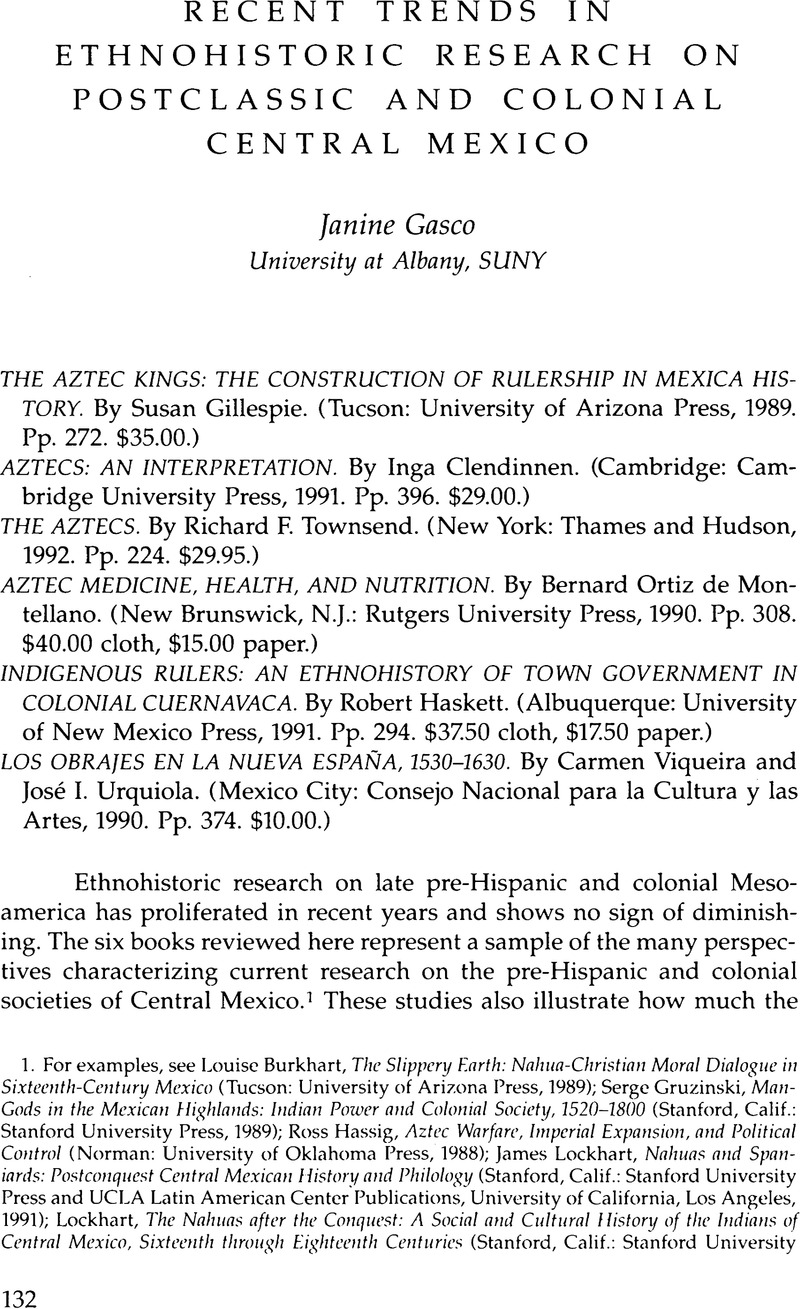No CrossRef data available.
Article contents
Recent Trends in Ethnohistoric Research on Postclassic and Colonial Central Mexico
Review products
Published online by Cambridge University Press: 05 October 2022
Abstract

- Type
- Review Essays
- Information
- Copyright
- Copyright 1994 by the University of Texas Press
References
1. For examples, see Louise Burkhart, The Slippery Earth: Nahua-Christian Moral Dialogue in Sixteenth-Century Mexico (Tucson: University of Arizona Press, 1989); Serge Gruzinski, Man-Gods in the Mexican Highlands: Indian Power and Colonial Society, 15201800 (Stanford, Calif.: Stanford University Press, 1989); Ross Hassig, Aztec Warfare, Imperial Expansion, and Political Control (Norman: University of Oklahoma Press, 1988); James Lockhart, Nahuas and Spaniards: Postconquest Central Mexican History and Philology (Stanford, Calif.: Stanford University Press and UCLA Latin American Center Publications, University of California, Los Angeles, 1991); Lockhart, The Nahuas after the Conquest: A Social and Cultural History of the Indians of Central Mexico, Sixteenth through Eighteenth Centuries (Stanford, Calif.: Stanford University Press, 1992); and Susan Schroeder, Chimalpahin and the Kingdoms of Chalco (Tucson: University of Arizona Press, 1991).
2. Clendinnen and Haskett are historians; Gillespie, Ortiz de Montellano, Viqueira, and Urquiola are anthropologists; and Townsend is an art historian.
3. The term Aztec refers to a number of culturally related peoples who lived in the Valley of Mexico in the fifteenth century.
4. The Mexica were one of the Nahuatl-speaking groups that constituted the Aztecs (see note 3). They lived in the cities of Tenochtitlan and Tlatelolco and dominated the Basin of Mexico at the time of the Spanish invasion.
5. Eric Wolf, Europe and the People without History (Berkeley and Los Angeles: University of California Press, 1982); and Angel Palerm, Antropologa y marxismo (Mexico City: Nueva Imagen, 1980).




